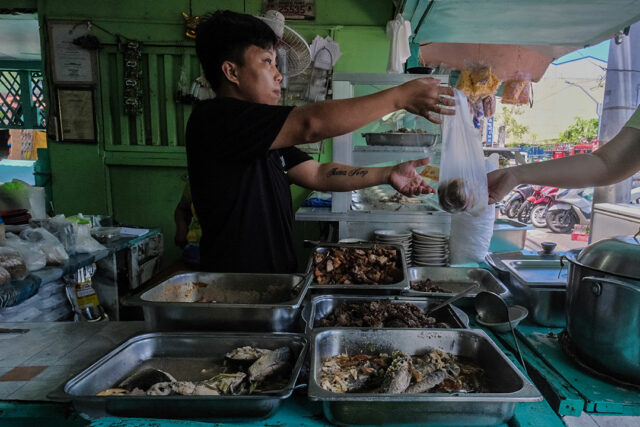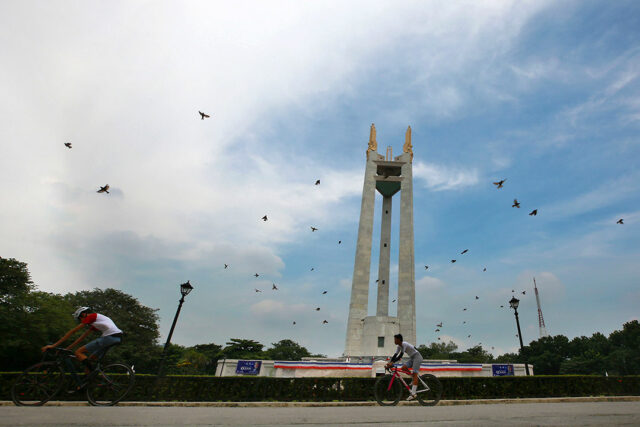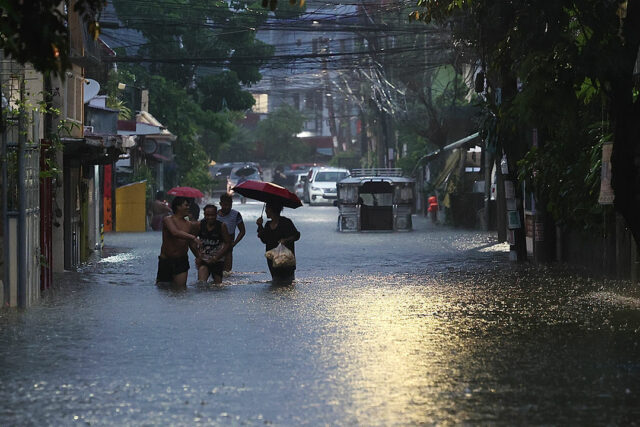Inflation could further ease in Q4

By Luisa Maria Jacinta C. Jocson, Reporter
PHILIPPINE headline inflation could ease to less than 2% in the fourth quarter of this year, Nomura Global Markets Research said in a report.
Nomura said it is “penciling in a trajectory in which headline inflation drops to less than 2% by fourth quarter 2024, a substantial decline from 4.4% in July, and thereafter hovering within a similar range for most of the first half of 2025.”
Nomura said it sees inflation settling at 2.8% this year and further easing to 2.3% in 2025.
These forecasts are lower than the Bangko Sentral ng Pilipinas’ (BSP) own projections. The central bank expects inflation to average 3.4% in 2024 and 3.1% next year.
Nomura said its inflation outlook is mainly driven by the recent cut in tariffs on rice imports.
In June, President Ferdinand R. Marcos, Jr. issued an executive order reducing the tariff on rice imports to 15% from 35%, until 2028 to tame rice prices.
Rice inflation, which accounts for nearly half of overall inflation, eased to 20.9% in July from 22.5% a month ago. This marked the fourth straight month of slower rice inflation.
Nomura said it sees the BSP further cutting rates for the rest of this year.
“Overall, we reiterate our forecasts that BSP will cut by 25 basis points (bps) each in the last two meetings of the year, i.e. in October and December,” it said.
The Monetary Board last week reduced the target reverse repurchase (RRP) rate by 25 bps to 6.25% from the over 17-year high of 6.5%.
BSP Governor Eli M. Remolona, Jr. said that the central bank could deliver one more 25-bp cut in the fourth quarter.
“Beyond that, we also expect BSP to cut in the first three meetings in 2025 before pausing from there. This would bring the RRP rate to 5% by May 2025, i.e. a total of 150-bp cuts in this cycle,” it added.
Nomura said the BSP’s next policy decisions will largely be driven by the inflation path in the coming months.
“If inflation continues on a downward path, BSP can look to further remove the restrictiveness in the monetary stance to support a recovery in domestic demand and overall growth.”
“Moreover, we continue to think the Fed turning dovish will play a role, and its easing cycle underway from September, as our US team expects, should support further BSP’s consecutive rate cuts in the coming months,” it added.
The US Federal Reserve appears to be very much on track for an interest rate cut in September after a “vast majority” of officials said such an action was likely, according to the minutes of the US central bank’s July 30-31 meeting, Reuters reported.
The minutes, which were released on Wednesday, even showed some policy makers would have been willing to reduce borrowing costs at last month’s gathering.
The policy-setting Federal Open Market Committee left its benchmark interest rate unchanged in the 5.25%-5.5% range on July 31 but opened the door to a cut at the Sept. 17-18 meeting.
Financial markets have been expecting the September meeting to kick off the Fed’s policy easing, with as much as a full percentage point worth of rate cuts expected by the end of this year.
PESO IMPACT
Meanwhile, Bank of America (BofA) Global Research in a separate report noted the recent impact of the BSP’s policy easing on the peso.
“The Philippine peso has strengthened versus the US dollar, but less so compared to peers in the region, taking cues from the BSP’s rate cut in the last meeting and dovish guidance for another possible cut this year,” it said.
BofA now expects the peso to average P56 against the greenback by yearend from its earlier forecast of P57 per dollar.
“With the Fed cutting cycle likely commencing soon, Philippine peso could still appreciate versus the US dollar over time, which would keep BSP relatively comfortable on FX (foreign exchange) moves,” it said.
However, BofA also noted that the peso may be sensitive to the Fed’s moves.
“Lower rates in the Philippines have raised the likelihood of even a narrower interest rate buffer against US dollar rates. That may gain importance as a factor for corporate hedging behavior once the US dollar stabilizes,” it said.
“This pressure could increase if the US dollar strength picks up or US yields move higher again, increasing Philippine peso sensitivity to the US policy outlook.”
The peso closed at P56.333 against the dollar on Thursday, strengthening by 16.7 centavos from its P56.50 finish on Wednesday. This was its strongest finish in more than four months or since its P56.315 close on April 2.
The local currency has been trading at the P57- or P58-a-dollar level in the past months.
“The Philippine peso has weakened against most Asian peers this year, partly as a result of BSP’s dovish bias. With the next policy meeting some time away, US dollar direction could be the key factor driving the peso in the near term,” it added.















